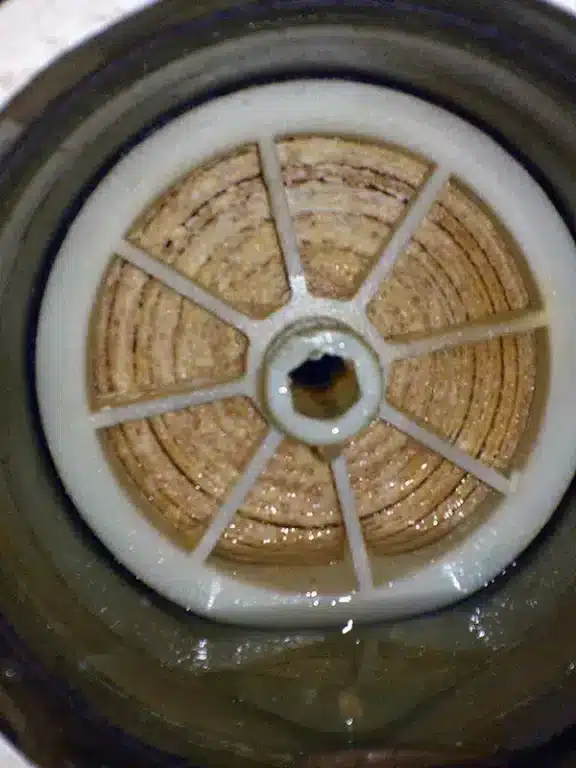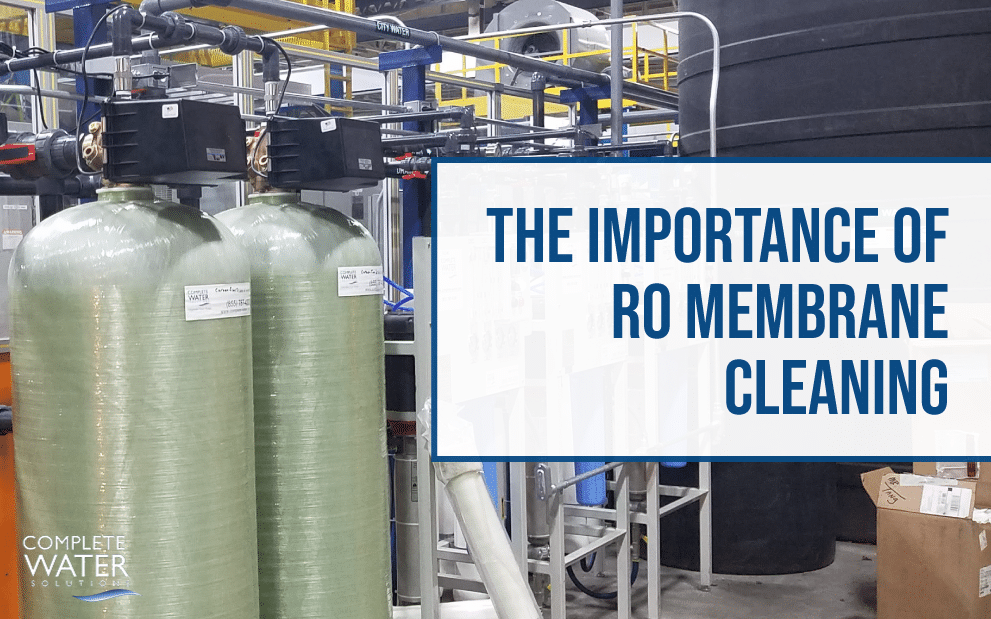Industrial reverse osmosis systems do a lot of the work when it comes to removing contaminants during water treatment. It’s important to monitor when your industrial RO system is in need of its own decontamination. The membrane of the reverse osmosis system can become soiled with suspended solids, microorganisms and mineral scale during its normal operation. If this issue is not taken care of in a timely manner it can cause a loss in water output and/or salt rejection in your system.
Why is it Important to Clean the Membrane of Your RO System?
It’s important to know the specifics on when to clean your businesses RO membrane so that you can avoid long-lasting damage. One of the first signs of contamination is when the output of clean water from your filtration system drops from its initial flow rate by 10%. Other early signs include when the product water’s salt passage increases by over 5-10% or when the normalized pressure drop increases by 10-15%. If you come across one or more of these issues, or others, it is time to clean your RO membrane. Whether this is your first time cleaning the membrane of your industrial RO system or not, it’s crucial to have the proper cleaning products that are up to the task. The type of cleaner needed will always depend on the type of foulant found in the membrane. For most contaminations, both acid cleaner and alkaline cleaner will be needed, but it is recommended to start with alkaline cleaning prior to acid cleaning. However, if you are dealing with calcium carbonate scaling specifically acid cleaning alone will do the trick.

RO Membrane Cleaning Procedure
The procedure taken to complete the cleaning process is as important as the cleaning itself. Follow these steps when you go to clean the membranes on your industrial reverse osmosis system
1. Cleaning Fluid Production
Cleaning fluids used in the process need to be of a certain pH and they each must be dissolved and mixed before being added to the RO membrane for cleaning.
2. Feed Water Removal
All of the feed water residing in the pressure vessels and elements needs to be removed with cleaning fluid.
3. Low-Flow Recirculation through the Pressure Vessels
This takes place when the feed water is forced out of the system and the cleaning fluid feeds into the drains.
4. Soaking Up Cleaning Fluid
In this step, the pump is shut off which allows the cleaning fluid to soak into the membranes.
5. Pressure Vessel Drainage
This is when the cleaning fluid is pumped out of the system and the cleaning fluid can then be examined to determine the exact level of contamination.
6. System Rinse
Use permeate or clean, good-quality water to rinse out the system.
7. Starting up the Newly Cleaned System
Start up the installation like normal and rinse again if cleaning fluid is still present in the permeate.
It's Time to Begin Water Treatment
Now that your reverse osmosis membrane is clean, you can continue on with water treatment. If your business is struggling with this process or has any additional questions on industrial water treatment, Complete Water Solutions is here to help.
Reverse Osmosis System Membrane Cleaning from Complete Water Solutions
Complete Water solutions has the professionals to help your company no matter the severity of the issue. Our team has years of experience in this industry and our goal is to ensure that your company has safe and clean water so that your business’ equipment can continue to run efficiently. If your company needs help with RO membrane cleaning be sure to get in touch with the experts at Complete Water Solutions today!
With over 30 years of hands-on experience in the water treatment industry, Nathan Olszak is a trusted water treatment expert. He specializes in designing, engineering, and servicing water treatment systems. As the owner of Complete Water Solutions, Osmonics, and Membrane Cleaning Pro, Nathan has built a reputation for delivering customized water treatment solutions that enhance efficiency, reliability, and water quality across various industries, including the medical, commercial, and manufacturing sectors.
Nathan’s journey in water treatment began as a service technician. He gained in-depth knowledge by working with all major brands of equipment, including Veolia, Suez, Bruner, Culligan, Pentair, Aquamatic, Osmonics, GE Water, Marlo, Lakeside, Fleck, Autotrol, US Filter, ION Pure, Siemens, Evoqua, and many others. This hands-on expertise, combined with his technical certifications, has made him a leader in water system engineering and water management.
Credentials & Expertise
- Certifications: David H. Paul Reverse Osmosis Certification, PLC Programming
- License: Power Plant Operating Engineer 3rd Class
- Specialties:
- Design & engineering of water treatment systems and advanced water systems
- Custom water filtration systems and solutions
- Installation, automation, and repair of water treatment systems
- Expertise in Reverse Osmosis (RO), Deionization, Water Softening, Carbon Filtration, Iron Filtration, UV Treatment, Ultrafiltration (UF), Process Filtration, CEDI/EDI, and more
- Specialized knowledge in Boiler Feed Water, Tower Makeup Water, and drinking water production for industries such as bottling, pharmaceuticals, and food processing
- Project management and reclaiming of water system waste for other uses
- Evaluation of raw water sources and potential contamination risks
- Industrial water treatment strategies to prevent corrosion and optimize system performance
- Boiler water treatment to enhance energy efficiency and system longevity
Nathan’s commitment to excellence extends beyond equipment sales and service. He works closely with clients to develop tailored water treatment services that optimize performance and meet their operations’ unique demands. His expertise covers methods that mitigate water impurities, ensure fresh water accessibility, and maintain regulatory compliance. It also includes the design of high-efficiency reverse osmosis systems for industrial use.
Nathan focuses on the latest technology in water conditioning, water softeners, filters, and pumps to improve maintenance and efficiency. His experience in laboratory testing and biofilm control ensures the highest industry standards in water treatment processes and water management.
Additionally, his deep understanding of infrastructure and water data analysis provides long-term, cost-effective solutions that promote health and safety. His expertise ensures that businesses receive top-tier, quality water treatment solutions.
For insights into the latest industry trends, innovations, and best practices, explore the Complete Water Solutions Blog, where Nathan shares valuable information on water filtration systems, sustainability, and water solutions engineering.
Give Us A Call (855) 787-4200 or Email info@complete-water.com

